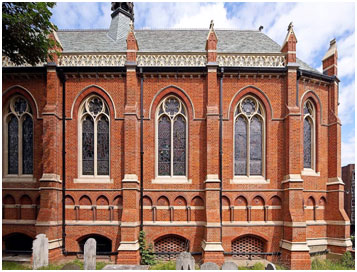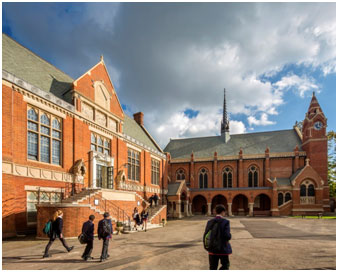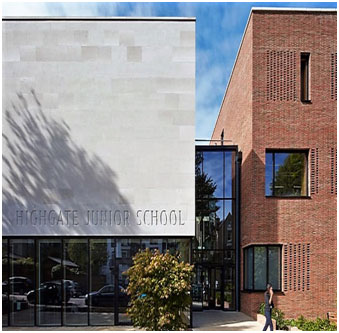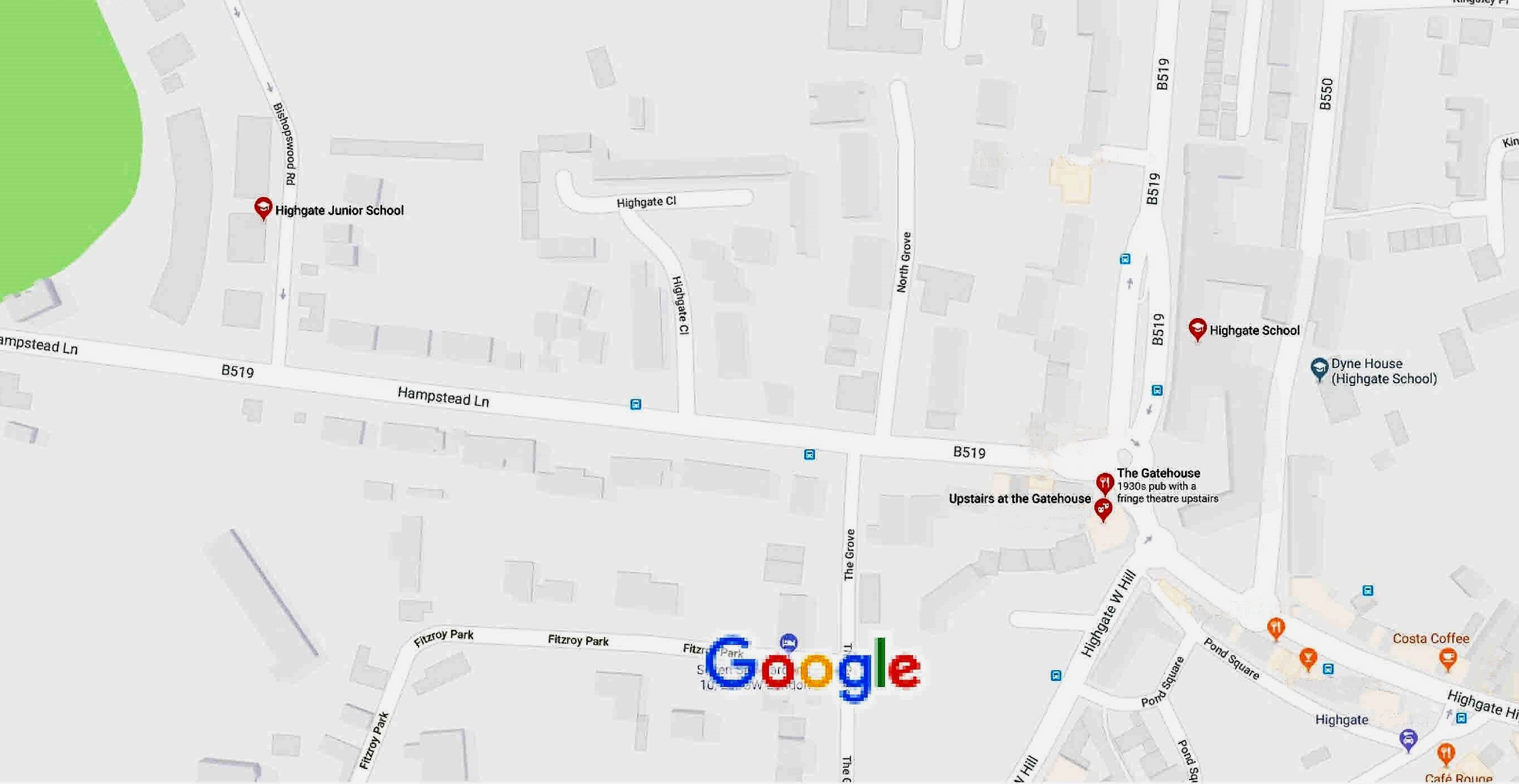Founded in 1565
In 1565 a free school for the education of boys and young men in grammar was founded in Highgate by Sir Roger Cholmeley, Chief Justice of the Queen’s Bench. Bishop Grindal of London granted the chapel and former hermitage of Highgate, with other lands and rights on his manor of Hornsey, for the use of the school. The number of free scholars, drawn from Highgate and the surrounding villages, was fixed at forty.
Early History
By 1711 the chest which contained the deeds and charters of the school had been lost. Apart from recording the appointment of new masters, references to the school in the first minute book of the governors are sparse. In 1594 the schoolmaster was removed for neglecting his duties. In 1615 the villagers complained that the master read the service inaudibly in the chapel. In 1644 the Committee for Plundered Ministers deprived Thomas Carter the schoolmaster for alleged drunkenness. He had been imprisoned in 1641-2 for 15 months for continuing to use the Book of Common Prayer in the chapel and for speaking against Parliament.
Classical Education
In 1719-20 the chapel was rebuilt and enlarged, and by that date the Cholmeley Charity was also supporting alms houses and a school for poor girls. Such work could only partly be supported from pew rents and benefactions to the chapel. In the 17thcentury the school probably gave a classical education to its pupils.
By the beginning of the 19thcentury the Cholmeley School had become an elementary school for 40 poor boys in the village. In 1819 the Brougham committee found that there was scarcely enough room for them all in the school-house. The boys, who were frequently unruly, were taught reading, writing, and arithmetic by the chapel sexton. The master declared that he had never known grammar to be taught in the school.
40 Places for free education
By this time the chapel was too small for the growing population of Highgate. The governors launched an appeal for funds to build a new church, and a parliamentary grant was made. In 1821 the governors introduced a private Bill to confirm their title to the chapel and to create a new parish at Highgate. The new statutes for the school were approved in 1832. The boys were to be instructed in Latin and Greek and the principles of religion according to the teaching of the Church of England. Forty boys were to be educated free, but the master was to be allowed to take as many ‘pay-boys’ as he liked, and he was to appoint all the ushers and assistant masters.
In 1838 John Bradley Dyne, a Fellow of Wadham College, Oxford, became the new headmaster. He was young, energetic, and not encumbered with parochial duties. About five pupils a year went to one or other of the universities. The headmaster was assisted by six masters.
The Second Wold War
Most of the school buildings were taken over by the government when the Second World War began. Teaching went on in those buildings that remained, but the greater part of the staff and pupils was evacuated to Westward Ho! (Devon). The boys lived and were taught in hotels and boarding-houses which had been taken over for this purpose. In 1943 the school was obliged for financial reasons to return to London, and its buildings in Highgate were returned in the same year.
In 1963 the buildings of Highgate School formed a miscellaneous group on the top of Highgate Hill. The oldest part, built in 1866-7, consisted of a red brick Gothic chapel and the school-house, which contained the library and assembly hall. The new building of 1928 practically doubled the area covered by the school. Built in neo-Georgian style, it contained not only facilities for science and engineering, but also extra classrooms, a new library, and a large lecture room. A quarter of a mile from the main buildings there were boarding-houses, a gymnasium, a cricket pavilion, and the Junior School, all grouped around the cricket and sports field.
In 2001 the school announced its intention to become fully co-educational ending over four hundred years of single sex education, and girls joined the Senior and Junior schools from 2004. In April 2006 the Mills Centre for Art, Design and Technology was opened, incorporating an area commemorating former director of art Sir Kyffin Williams.
Throughout 2015 the School celebrated its 450thanniversary. In January 2015 a Museum opened, which can be visited by the public on Saturday mornings in term-time.
In September 2016 a splendid new building for the Junior School opened.





